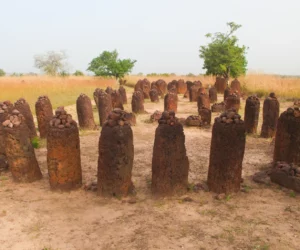The Enigmatic Senegambian Stone Circles The Senegambian stone circles, also known as the Wassu stone circles, are a captivating array of megalithic monuments. Located in The Gambia and central Senegal, these stone circles form one of the most extensive sacred landscapes in the world. An Overview of the Stone Circles Spanning a region of 30,000…
Ancient Artifacts
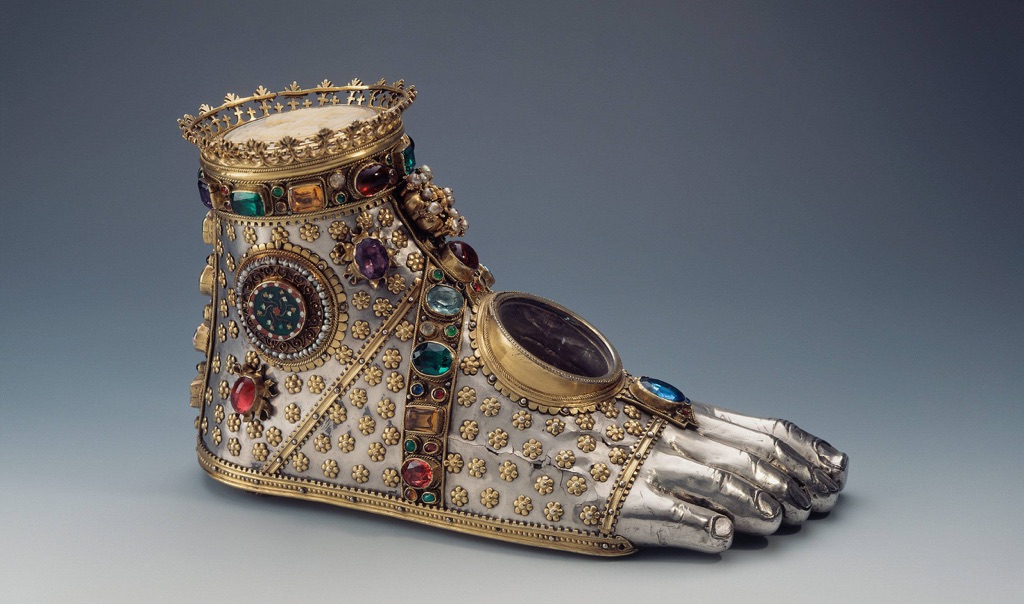
Moving to the East, ancient China artifacts like bronze vessels and oracle bones shed light on the rituals and governance of early Chinese dynasties. These artifacts highlight China’s long history of craftsmanship and written language. Similarly, ancient Egyptian artifacts are world-renowned, particularly for their funerary art, such as the treasures from King Tutankhamun’s tomb. These pieces reflect the Egyptians’ beliefs about death and the afterlife. Artifacts are not just old objects to be displayed in museums; they are keys to unlocking the secrets of human development across the ages. They preserve the ideas and values of people who lived thousands of years before us. Through careful study, they teach us about our collective history and heritage.
Among the most famous ancient artifacts in the world is the Rosetta Stone. Discovered in 1799, this granodiorite stele was the key to understanding Egyptian hieroglyphs—a script made of small pictures that was used originally in ancient Egypt for religious texts. The Rosetta Stone is inscribed with a decree issued at Memphis in 196 BC on behalf of King Ptolemy V. The decree appears in three scripts: the upper text is Ancient Egyptian hieroglyphs, the middle portion Demotic script, and the lower Ancient Greek. Because it presents essentially the same text in all three scripts, it provided the crucial link for scholars to decipher Egyptian hieroglyphs, thereby opening a window into ancient Egyptian history.
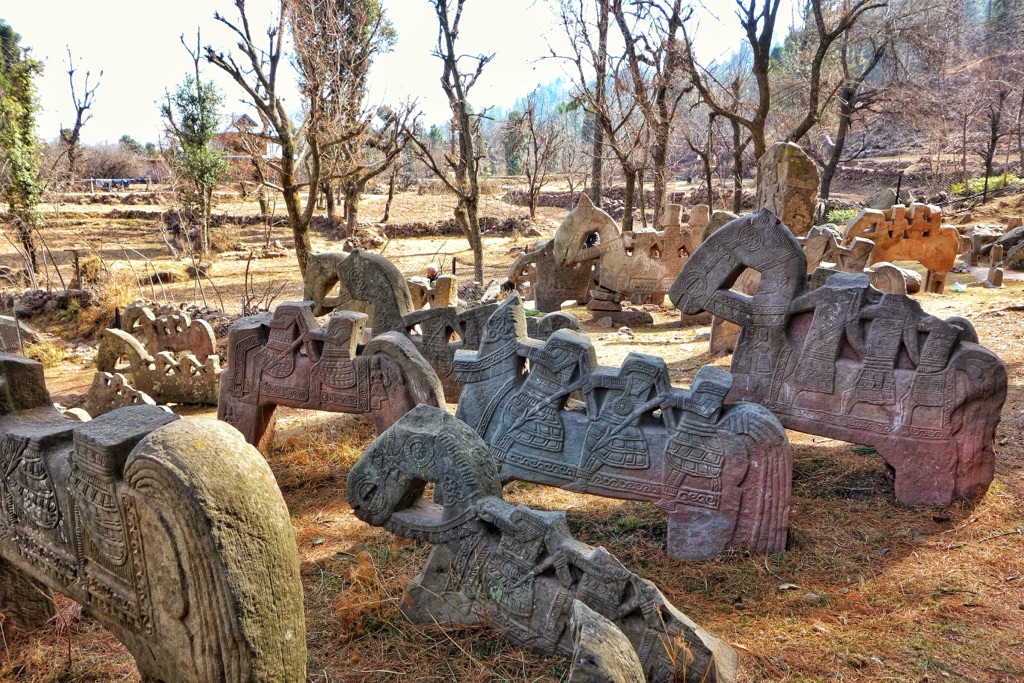
The title of the oldest artifact on earth goes to the stone tools found in Lomekwi 3, Kenya, which date back to 3.3 million years ago. These tools predate the earliest known humans and suggest that tool-making was a part of our pre-human ancestors’ way of life. These ancient tools mark a significant milestone in human evolutionary history, indicating the beginnings of technology and innovation. They are not just simple objects; they represent the dawn of human ingenuity and the very first steps towards the complex societies we have today.
An ancient artifact can be defined as any item made or used by humans in ancient times that has cultural, historical, or archaeological significance. These artifacts can range from monumental structures like the pyramids of Egypt to small, everyday objects like Roman coins. They can include items as diverse as weapons, clothing, and artwork. Each artifact, no matter its size or apparent significance, offers a glimpse into the lives of those who came before us, providing evidence of past behaviors, beliefs, and social structures.
Famous ancient artifacts not only include monumental finds like the Rosetta Stone or the treasures of Tutankhamun’s tomb but also the Terracotta Army of China, the Dead Sea Scrolls, and the Venus of Willendorf. The Terracotta Army, buried with the first Emperor of China, Qin Shi Huang, consists of thousands of life-sized figures meant to protect the emperor in the afterlife. The Dead Sea Scrolls, discovered in a series of caves near the Dead Sea, are ancient Jewish texts that offer invaluable insight into the history of Judaism and the early text of the Bible. The Venus of Willendorf, a small Paleolithic figurine discovered in Austria, dates back to about 28,000 BCE and is thought to represent fertility. Each of these artifacts, in its own way, has reshaped our understanding of human history, offering evidence of the complexity, diversity, and ingenuity of ancient civilizations.
List of Discovered Ancient Artifacts
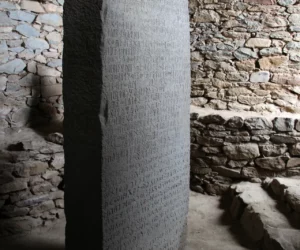
Ezana Stone
The Ezana Stone: A Testament to Ethiopia’s Ancient Christian Heritage In modern-day Axum, Ethiopia, the Ezana Stone stands as a remarkable artifact from the ancient Kingdom of Aksum. This stone monument, likely dating from the 4th century AD, records King Ezana’s conversion to Christianity and his conquests over neighboring regions, including Meroë. Historical Context King…
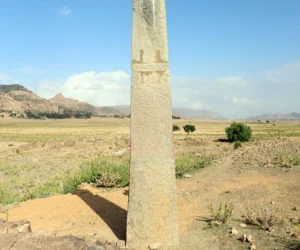
The Hawulti Monument
Hawulti: The Ancient Obelisk of Matara, Eritrea In the historical town of Matara, Eritrea, stands the Hawulti, a pre-Aksumite obelisk of great significance. This monument bears the oldest known example of the ancient Ge’ez script, making it a valuable piece of Eritrea’s rich cultural heritage. Description of Hawulti The Hawulti obelisk rises to a height…
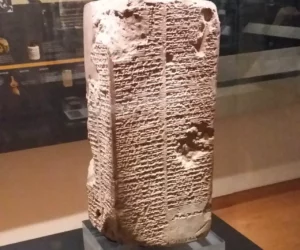
Weld-Blundell Prism
The Weld-Blundell Prism: A Window into Ancient Sumer In 1922, British archaeologist Herbert Weld Blundell unearthed a remarkable artifact during an expedition in Larsa, modern-day Iraq. This find, now known as the Weld-Blundell Prism, dates back to around 1800 BCE and resides in the Ashmolean Museum in Oxford. Standing about 20 cm tall and 9…
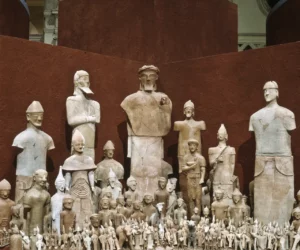
The Terracotta Army of Cyprus
The Discovery the Terracotta Army of Agia Eirini In the heart of the Kyrenia district, lies the quaint village of Agia Eirini, also known as Akdeniz. This picturesque place, under the de facto control of the Turkish Republic of Northern Cyprus, is home to an extraordinary archaeological find: the Cypriot Terracotta Army. The 1929 Discovery…
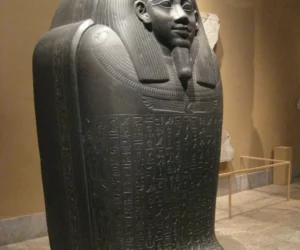
Sarcophagus of Harkhebit
The Splendid Sarcophagus of Harkhebit In the early 26th Dynasty of ancient Egypt, Harkhebit held esteemed titles such as “Royal Seal Bearer,” “Sole Companion,” “Chief Priest of the Shrines of Upper and Lower Egypt,” and “Overseer of the Cabinet.” His final resting place, a tomb located east of the Djoser complex at Saqqara, reflects his…

